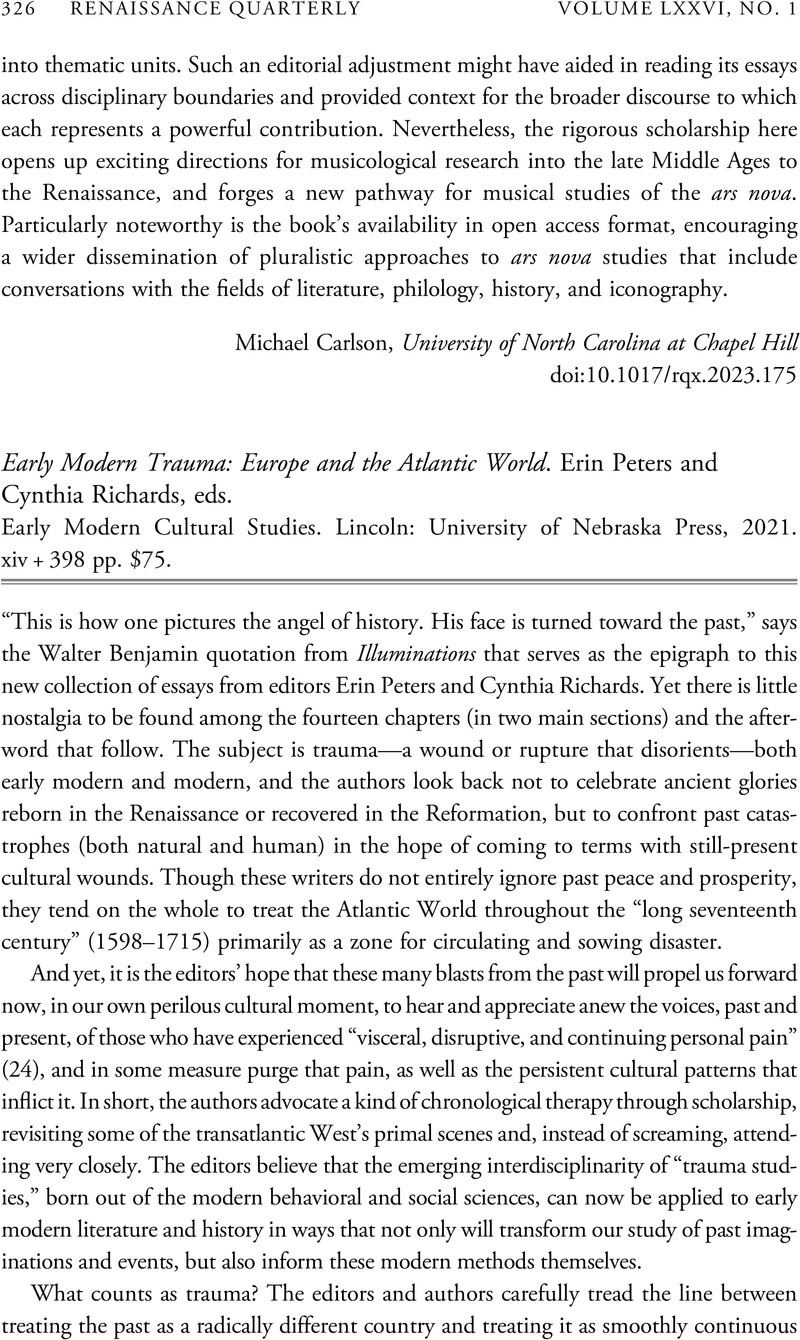No CrossRef data available.
Article contents
Early Modern Trauma: Europe and the Atlantic World. Erin Peters and Cynthia Richards, eds. Early Modern Cultural Studies. Lincoln: University of Nebraska Press, 2021. xiv + 398 pp. $75.
Review products
Early Modern Trauma: Europe and the Atlantic World. Erin Peters and Cynthia Richards, eds. Early Modern Cultural Studies. Lincoln: University of Nebraska Press, 2021. xiv + 398 pp. $75.
Published online by Cambridge University Press: 17 April 2023
Abstract
An abstract is not available for this content so a preview has been provided. Please use the Get access link above for information on how to access this content.

- Type
- Review
- Information
- Copyright
- Copyright © The Author(s), 2023. Published by the Renaissance Society of America



